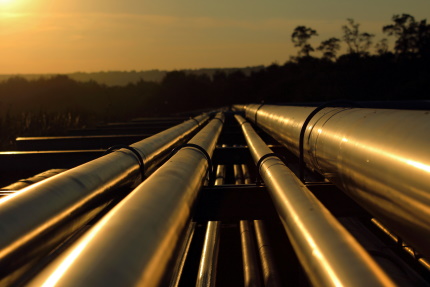Traditionally thought of as a means to transport oil and natural gas from point A to point B, pipelines are a critical part of the world’s energy infrastructure.
However, that is gradually changing as the world moves away from fossil fuels.
We saw one example of this in Europe, in early December. Spain and France put a €2.5 billion price tag on a new undersea hydrogen pipeline between the countries. It should be operational by 2030.
The pipeline, which will run from Barcelona to Marseille, is forecast to be one of Europe’s biggest and most expensive infrastructure projects in response to the continent’s ongoing energy crisis stemming from huge cuts in Russian energy exports.
We are seeing a similar change in the pipeline industry that is beginning here in the U.S. as well…

21st Century Energy Infrastructure
The U.S. midstream energy sector has, not surprisingly, often clashed with climate activists who oppose pipeline projects. But even Wall Street is pushing the industry to show how it will adapt to demands for a lower-carbon world.
In response, pipeline operators say there is vast potential for their pipelines to function as a vital link in carbon capture and storage (CCS) systems. This is where carbon dioxide (CO2) emissions from various industries are trapped in underground reservoirs, instead of being released into the atmosphere.
The U.S. already has about 5,150 miles of CO2 pipelines. And while the network is tiny compared with the vast nationwide web of oil and gas pipes, it is still the largest in the world. These pipelines are mostly clustered around the Permian Basin oilfields of west Texas, where CO2 is injected into wells to squeeze out crude oil deposits.
Needless to say, far more widespread deployment will be required to reach current climate goals. Pipes should one day funnel CO2 exhaust from emitters including power plants, cement factories and oil refineries, to underground sites hundreds of miles away.
The scale of pipeline infrastructure needed to support longer-term CCS deployment around the world is vast. The estimated CO2 transportation infrastructure to be built in the coming 30–40 years (consistent with the International Energy Agency’s least-cost pathway to halve energy-related CO2 emissions by 2050) is roughly 100 times larger than currently exists!
Here in the U.S., a July 2021 report from the White House Council on Environmental Quality said that a CCS industry large enough to help meet the country’s goal of “net zero” emissions by 2050 could require 68,000 miles of new CO2 pipelines at a cost of as much as $230 billion. That is roughly comparable to the liquid fuel pipeline mileage built since 2000, a boom time for the oil industry.
No wonder, then, that the traditional oil and gas pipeline companies have spotted a huge opportunity. As François Poirier, CEO of pipeline company TC Energy (TRP), told analysts in 2021, a “fundamental aspect” of the CCS industry is “the ability to store and transport a molecule, which is, of course, our core business.”
However, one fly in the ointment is that CO2 pipelines require thicker walls than typical oil and gas pipes, to move condensed, liquefied gas under heavy pressure—severely limits prospects for cheaply converting existing infrastructure.
Nevertheless, the major U.S. pipeline companies remain interested. Steven Kean, CEO of pipeline giant Kinder Morgan (KMI), has told analysts several times that: “It’s hard to see how climate objectives are met without pretty widespread carbon capture and sequestration…We think we’ve got the expertise on the pipeline side of it.”
Jesse Arenivas, the new CEO of Enlink Midstream (ENLC), said that while companies in the sector will build more oil and gas infrastructure in the future, it is “inevitable” that eventually they would be building more pipelines to carry CO2, as well as hydrogen, than fossil fuels. “I do believe it provides a huge growth story.”
Pipeline Investment Opportunity
At the moment though, it is far too early in the energy transition to see which of the pipeline companies will be successful in an eventual move away from fossil fuels.
So, while we wait, why put money into the sector via an exchange traded fund (ETF) and collect a decent dividend?
One such ETF is the Global X MLP & Energy Infrastructure ETF (MLPX). It has 27 holdings and among its top positions are pipeline companies Enbridge (ENB) and Williams (WMB), as well as the aforementioned TC Energy and Kinder Morgan.
MLPX is up 11.75% over the past year and has a nice current dividend yield—the 30-day SEC yield is 5.87%. The investment pays a quarterly dividend.
Keep in mind that midstream’s role in oil and gas production and the defensive nature of its contracts and fee structures leave it better positioned in the current economic environment than other segments of the market.
Additional free cash flow for midstream equities through increasing U.S. energy production could result in further dividend and buyback activities, highlighting their balance sheet strength.
So, I’m content waiting for the eventual energy transition in MLPX at its current price.





